|
I drop down from a ledge and find myself in another enclosed area, unenterable buildings and impassable trees lining the path to the entrance for the next enclosed area at the opposite side. Between me and this objective are a smattering of waist high walls, some ammo and resources dotted around and four enemy NPCs on alert to insert some bullets into my body. Any gamer will be intimately acquainted with this setup. Let’s get murdery. My initial plan of stealth is thwarted, as it often is, when one NPC turns a corner unexpectedly to see me choking out their comrade. Naturally, they are shocked, recoiling for a moment before shouting, “She’s here!” so the other two are made aware of my presence. This whistleblower isn’t able to contribute much more, as they are quickly introduced to the shell spewing end of my shotgun. The remaining grunts, having seen another of their friends reduced to a fine paste, close on my position. Unfortunately for the first of them, this is a double barrelled shotgun. Now empty and with the final enemy taking aim, I rush to close the distance and melee with my lead pipe. However before I can strike the finishing blow, this nondescript cannon fodder NPC drops her weapon, falls to her knees, hands protecting her face and screams, “Please don’t kill me!” This isn’t how it’s supposed to go. Enemy AI are supposed to vainly fight you to the death, even after you’ve already killed dozens of their friends because, by God, they are going to be ‘the’ one that finally gets you. Sure occasionally you’ll have someone mutter a half hearted plea in a brief, intimate moment when you’ve snuck up on them before you incapacitate/kill them, but never anything this visceral, this desperate, this real. I’ve never seen this in a game before. Of course I still killed her. It’s a game, that’s what you’re supposed to do. If I’d let her go, what, was she just going to leave the area and gratefully live out the rest of her life? No, she’d either redraw her dropped gun on me or go and alert more baddies, after all I’m on her turf. At least that’s what I tell myself, I didn’t let her go so I’ve no way of knowing. Honestly after 20 years of gaming it was sheer instinct to take the fraction of a second to press Square and effortlessly launch the lead pipe into her skull. But, for the first time, that decision has stayed with me. The Last of Us Part II is all about how you are your antagonist’s antagonist. What is right and just for you is an unforgivable crime to those you perpetrate those actions on. And, without going into the bigger story, of which this constant shifting of perspectives is a main feature, it is present in even these smallest encounters. It’s the closest you can come actually feeling like you are fighting people instead of pixels. They all have names. They’ll call out for Colins, Sarahs and Zoes, both when they find their body (you just killed something with a name) and to periodically check in. This one in particular was such a small addition but made so much sense, unlike most other games where enemies follow their pre programmed pathing, completely unconcerned that the bustling crowd of comrades they were surrounded by but moments ago have mysteriously vanished, thanks to your spree of stealth takedowns. Of course other games have this, notably the Batman Arkham series as they get more terrified as their numbers dwindle, but usually only when they stumble upon a body, here they are proactive in sticking together and working as a team to hunt you down. *minor spoiler paragraph*
Even the dogs have names. When I took out a dog from range with a bow (there are no good boys in this game while playing as Ellie) its owner upon discovery cried out, “Oh my God, they killed Bear! They killed my dog!” A few chapters later in a flashback scene, I encounter the same dog called Bear, sitting happily as I scratch his ears. Since my first encounter with Bear was from ambient dialogue, this is a connection not every player would get, but one that adds so many extra dimensions with one throwaway line. *minor spoilers over* This extra level of immersion also works to The Last of Us Part II’s detriment though, as it is only one faction that has these unexpectedly human reactions. The others, the Infected - zombies that only bum rush you with no concern for their safety or other Infected - and a religious cult who are far more stereotypical in their belligerence and AI aggression are much less interesting to fight, though there are large periods of the game where they are the only enemies, and it’s at these points where the game starts to feel like a slog. The main theme of The Last of Us Part II is the rather unsurprising stance that violence is destructive. I have no issue that it makes that point by making me commit endless acts of violence, it’s a video game, what else are you supposed to do? This is a point Naughty Dog themselves have toyed with in the past, with Uncharted 4 having a trophy called ‘Ludonarrative Dissonance’ - the disconnection between a game’s story and its gameplay - for when quippy and personable protagonist Nathan Drake kills 1000 people, but as a player you should be able to distinguish between what is important to the story and what is there to make the game fun. That was what The Last of Us did so effectively in that random scene as an unimportant character begged for her life, it blurred the lines between Ellie’s story and the genocidal killing spree she commits for the telling of that story. Most video games, even the morally complex ones, tend to nullify that choice through gameplay bonuses. Bioshock gives you more resources for sparing the Little Sisters than killing them. Spec Ops: The Line gives you much needed ammo for executing downed enemies, so there’s little reason not to trigger that brutal kill animation. In The Last of Us I gained nothing for killing that pleading woman, other than the certainty that she could not then take up arms against me again. At least, that’s what I tell myself.
0 Comments
It’s in New Orleans. By the Mercedes Benz Superdome to be precise. The statue is called Rebirth and was sculpted by Brian Hanlon. It’s of a man who’s name I had to Google. I even discovered it by accident. Myself and two accomplices were in New Orleans and taking in the sights. Looking for a chance to sober from our exploits in the French Quarter, the Superdome was something that even being from 7,000km away we had heard of, so we went to check it out. It’s a very impressive structure, set back high on a mound, and absolutely huge. It was January and the Saints had been eliminated before the playoffs, so we only saw the outside. And no one else was around. Facing the front stand of this mammoth stadium we looked around for a visitors entrance or gift shop. None was apparent. Let’s just walk around it and we’ll stumble upon something, we thought. We turned right and set off. Have I mentioned how massive it is? Well, after about twenty minutes and walking 350° of the circle we finally found the (unmarked) gift shop. The clerk, friendly though he was, made no attempt to hide laughing at us, the funniest thing he’d heard that year, pointing out the dumb Scottish boys who walked all the way around the stadium to every other customer in the store. Awright mate! Maybe if you had a sign outside? But I’m glad we did go the wrong way. Not only because it meant we saw the ridiculously named Smoothie King Stadium tucked away around the back, but we also stumbled upon the Rebirth Statue. It was 2006. The New Orleans Saints were playing their first game in New Orleans in almost two years, after the devastation caused by Hurricane Katrina, which almost brought the city to its knees. There was talk the area would have to be abandoned, left to become the biggest ghost town in the world. But despite it all, the city pulled through, and was beginning the long road to recovery. Their opponents that night were division rivals Atlanta Falcons. Just over a minute into the game, the Falcons are on a 4th down so go for a punt. These are standard plays and, with my limited understanding of American football, pass without much drama. However this time as the kicker, Michael Koenen, receives the ball and drops it to kick, a Saints player, Steve Gleason, breaks through the Atlanta lines, throws himself in front of Koenen and blocks the kick. The ball breaks for New Orleans who score the touchdown and the 75,000 crowd erupts. https://youtu.be/MIGgBhNtOP4?t=42 New Orleans, beaten, battered and bruised, was still alive, its spirit unbroken, its determination intact. It was an experience unique to sport, a unifying, cathartic moment seen by the world that galvanised an entire city. New Orleans returned and recovered its status as one of the most vibrant and unforgettable places in the world. The Saints went on to have their best season to date that year, and many put it down to that moment, the blocked kick, that marked New Orleans’ rebirth. And as if Steve Gleason wasn’t inspiring enough, by the time the statue was unveiled in 2012, he had been diagnosed with the terrible disease ALS, however had become a campaigner to raise awareness of ALS, and, unbeknownst to me, only three days after I write this is due to receive the Congressional Gold Medal for his contribution to the cause. But that’s not why it’s my favourite statue. It’s my favourite because, as well as marking Gleason’s heroic block, they have also included Koenen, the Atlanta kicker, in the statue, forever immortalising his fuck up.
Imagine being Koenen in that moment. 75,000 screaming fans going berserk, and forgetting the wider symbolic resonance of the play, knowing that you’d messed up a pretty basic play. I wonder if he thought, “Damn, I made a right arse of that. Hope no one ever goes and builds a statue of this.” That to me is art at its best. It can encapsulate moments of such intense emotion, ecstasy, pride, inspiration and hope. But if you can also capture some humour and an eternal “Get it right up you” to your local rivals, all the better. It's simply beautiful. Or rather, my judgement of morals in video games. Short answer, they’re great, nothing is more welcome than encountering a great moral crisis in your downtime. More specifically this is my judgement on how morals are measured. Recently I’ve been catching up with a few renowned games I missed on their first outing, which were highly praised for the maturity of their storytelling and depth of their decisions, with morality baked into their core. They were massively different games, but here’s my thoughts on how they dealt with the moral choices they made you grapple with. The first one is Catherine, or rather the 2019 remaster of the 2011 original, Catherine Full Body. The game invites you to escape your real life troubles and play as a borderline alcoholic experiencing an existential crisis who cheats on his girlfriend (escape?!). It is, essentially, a block puzzle game that chose as its packaging a mature look at adult romantic relationships. You play as Vincent who cheats on his long term girlfriend Katherine with a mysterious, attractive woman named Catherine. However in the re-release Full Body, there is a third character, Qatherine (Rin) added, and not as an afterthought, but thoroughly integrated through the entire game, in re-recorded dialogue, inserted in original scenes etc. Though this inclusion is impressively done, I do feel it somewhat spoiled the experience. Spoiled is the wrong word, and without having played the original I’m speculating, but Rin does seem to unbalance the game. The base choice was initially between Katherine, a stale relationship perhaps past its sell by date, built mostly on expectation with an overbearing partner (she scolds your drinking and even says she’ll be looking after your money when you get married) and Catherine, a free, young sex maniac who offers excitement and sends kinky pictures, if a bit domineering. However Rin appears to offer the best of both, developing a strong emotional connection, supporting you without impinging on your own freedoms. For the majority of the game she is presented as the obvious choice, removing the moral ambiguity, and gets more screen time than both original romantic options, leaving them both feeling sidelined. As to how morals work, there is a handy moral meter that changes depending on conversations you have in game or texts you send to Catherine, Katherine or Qatherine. If you choose to help or be nice to a character, it goes right for good morals, if you choose to not help or be self indulgent, it goes left for bad. There are also specific moral questions you are given after solving every puzzle with your answer moving the meter one way or the other. This in my view serves to simplify or nullify the ambiguity of the questions you’re answering. Some of the questions just don’t lend themselves to this binary right or wrong options, for instance answering “Do you believe in an afterlife?” with “Yes,” gives good morals and “No,” gives bad morals. Can a question of that magnitude really be boiled down like that? Sure the game calls the two sides of the meter ‘Order’ and ‘Chaos’, but if you’re human (a fair assumption) you are conditioned that ‘Blue’ - Order means good and ‘Red’ - Chaos means bad. Another question was “Do you prefer Big Budget Blockbusters or Small Indie Films?” What has that to do with Order and Chaos? Aren’t most big blockbusters by nature made to be safe, while indie lovers can also be total riots? On the whole these choices don’t make too much functional difference, changing only what ending you get (which can still be with any of the three women) and Vincent’s internal thoughts. This is a clever reframing, as it means you aren’t so much playing as him but guiding him, setting him on a path with these character revealing questions. My issue is trying to quantify such thought provoking dilemmas on a left - right barometer. If you choose the Rin route, obviously added years later, the questions are also much more simplistic with obvious ‘right’ answers, even when they should be far more complex. One excellent mechanic was after answering each question, it would show a pie chart of what real men and women in their 20s and 30s answered, which could be very revealing, but it showed on these latter Rin questions the players’ choices moved more and more out of sync with what real people actually answered. In a game about true love, “Would you be able to accept any secret your lover has?” is always answered “Yes,” but in real life, is it really so black and white? The second game I played was 2015’s Undertale, a side scrolling role playing game where you play a child who falls into a world of eccentric and often well meaning monsters. What made it famous was its genre bending approach in that it judged you not as the main character, but as the player. If you chose to kill everyone, it would ask you, directly, what in you made you behave this way, and if you only killed one it would ask why you stopped short of killing no one. In fairness it had an easier time handling its morality as you were judged by your actions, not words. There are three ‘main’ endings, Pacifist for killing no one, Neutral for killing some people (the one I got upon accidentally killing a couple) and Genocide for killing everyone. What the game does best is how your actions are integrated into the story, and while other games merely have characters react slightly different as the core experience remains fundamentally the same, Undertale’s story changes vastly depending on your actions. You feel they have real consequences, for instance in a Genocide run, latter game characters are absent as they have run away and are hiding from you. These positions aren’t immediately visible on screen, there is no bar checking in on your morals as you go, making your choices feel more natural and dynamic. Of course you can still judge one ending to be ‘good,’ sparing everyone and the other ‘bad,’ killing everyone, but what Undertale did very well that other games with similar all-good and all-bad paths often neglect is the grey bit in the middle. Usually in split morality games where you are regularly given good vs bad choices (Bioshock, Infamous, Mass Effect, Dishonoured, Mafia III etc) it makes sense to stick to one path entirely, as doing so rewards you with either high tier abilities in game or trophies/achievements for completing the game in one of its polar opposite ways (a sneaky con to make you play it twice and avoid trade ins). There is little point mixing between both and sitting in the murky moral middle, which is where most of us live in real life. Undertale at least doesn’t lock you out of paths or leave you missing out if you accidentally kill or spare someone, depending on playthrough. I inadvertently killed a character early in the game (and felt dreadful about it, since they purposely did not fight back, another example that challenges how you think a game is supposed to play), but instead of reloading a previous save I persisted, towards an end that incorporated my errors without feeling diluted, and meant I could play the rest of the game without stressing about sticking to one rigid path. The final game and absolute moral sickener I played was Lucas Pope’s 2013 Papers, Please. You are a border guard for a Soviet-esque communist dictatorship and review passports, visas, work passes etc of the people entering your country. There are no moral meters here and few hints of a ‘good’ ending. People come, you examine their documents, and if they are in order you let them in, if they are not you deny them entry. However you don’t have to, you can reject people who might cause trouble despite their papers being fine, or admit people who beg you for entry, the only penalty being 5 Credits, the in game currency. But you have a family, and they need your support. At the end of every day you can choose to buy food, heat or medicine for your family, and if you don’t, they will die. The game’s pacing and increasing difficulty means you often clear just enough to take home (you are paid per inspection), and with penalties coming with natural mistakes as well, you are left with many tough decisions. Is it worth the personal cost to yourself by admitting a newly married wife with her husband when she has no visa? There are times it is easy, such as human traffickers or murderers, who you can flag for ‘Detention’, but what about the shady resistance group offering freedom and a better life for all, when you are up for inspection from the commissar? Once I was left having scraped enough to pay for a birthday present for my son, but was plagued by thoughts of the mother who spent her life savings travelling to visit her estranged family that I’d rejected as her papers had expired en route. There’s nothing wrong with doing the ‘wrong’ thing in a video game, indeed some games force you to, just look at Untitled Goose Game where the mission is to be the biggest dick possible. A less fun example is the final level of The Last of Us, I did not agree with what my character was doing, but was stripped of my choice if I wanted to finish the game. The decision of what is right and wrong should be left up to us as gamers, not a moral guide meter. Fallout New Vegas was so much more absorbing with its faction system instead of its karma meter, as you were to decide what was right and wrong.
Games inherently don’t know morals, they are just strings of code which can easily become arbitrary. One that still rankles me is the honour system in Red Dead Redemption 2, where, as since there are upper and lower limits which were capped before you leveled up, and as I always sat at the top level, I couldn’t add to my number yet could still easily lose it. This led to the bizarre scenario where I reached max honour by wiping out an entire chapter of the Ku Klux Klan yet immediately lost it again because on my escape I bumped into someone with my horse. Some decisions shouldn’t be reduced to numbers. Games are a form of escapism. For relaxing, stress release or tests of skill, but they can also be character challenging. Difficult decisions can be some of gaming’s best moments, often I’ve had to pause a game and put the controller down as I’ve weighed up the pros and cons of impossible moral quandaries, but it’s so much more powerful when you are left to process the effects of your choice yourself, or have it be left ambiguous - “Clementine will remember that” - rather than have the game tut at you and shake its head. It’s not angry, just disappointed. The moral of this blog is, giving us tough moral decisions can be great, but please, don’t judge us. I don’t really follow music. Of all the things to keep up with in modern life - movies, TV, sport, books, podcasts, video games - something had to give and for me it was music. It’s probably since I listen to it passively, having it on the background as I do other things. I find it difficult sitting, listening to music before my mind wanders or I get bored since I’m a dirty millennial with a tiny attention span. One of the few artists I follow - religiously - is Bruce Springsteen. It’s a well documented phenomenon, his legendary concerts closer to evangelical events, inspiring a maybe not as visible, but possibly more passionate fandom than many others today, one which only an artist with forty plus years experience can cultivate. It goes beyond just liking his songs, they bury into you and can move your very soul. There’s even another movie coming out, ‘Blinded By the Light’ with the inspiration the Boss’ songs can evoke at its heart. It’s been a good few years for Boss fans, first his autobiography followed by the record breaking Broadway show it spawned proving, as if it needed to be, that he must be one of the most naturally gifted storytellers ever. It’s rare to encounter someone with the talent of making the specific so universal, placing you in a scene you can picture, even feel, with only a few words. Sometimes I hear a lyric and think “that’s so good, why do even bother when nothing I write will ever come close?” Most recently was his latest album, Western Stars. His fourth ‘solo’ album is a collection of ballads tied around the American expanse and the loneliness and beauty that comes with it. There are more upbeat numbers like ‘Tucson Train’ and ‘Sleepy Joe’s Cafe’, and more sombre, orchestral tracks like ‘Chasin’ Wild Horses’ and the titular ‘Western Stars’. For me, it’s good but as yet hasn’t made much of an impression. Coming back to how I passively listen to music, the tunes, bar a few, don’t immediately sear themselves in your memory, which makes it harder to fully engage with the lyrics. The characters are good, but a bit more removed from my experience, with I think some of the country music elements not translating as well to a city slicker in the UK. Still, it was better than the last studio album we were treated to, High Hopes, five years ago. More Springsteen music is always a good thing, and with it comes the excuse to delve into his back catalogue, again. Here’s my top five Bruce Springsteen albums, listed in the order they were released.
Born to Run What an album, a mix of fun, catchy tracks and sweeping epics, all bursting with youthful ambition, potential, anticipation and dreams of great things to come. I’m older than Springsteen was when he wrote this, which is a real existential trigger. Standout Track - It could really be any of them, but for the beautifully simple opening to the defiant crescendo, it has to be Thunder Road. Darkness on the Edge of Town An album I only realise the brilliance of the more I listen to it. A more mature and sedate follow up to Born to Run, with the beginnings of Springsteen’s knack for capturing the resilience and nobility of the downtrodden, everyman working class. Standout Track - Depends on my mood, but as a tiebreaker it goes to the catchiness of The Promised Land. Nebraska In my view his best for writing and imagery. Totally different from everything he’d done before, but they land just as powerfully even without the backing of the E Street Band. Delves into the darkness of the human psyche, but tempered with the hope for something better. Standout Track - Tough choice, but for doing so much scene setting with so little, and the deeply personal message for him, My Father’s House. Born in the USA The album that made him a phenomenon, and for good reason. Springsteen himself considers it a collection of leftover tracks from other sessions, but what tracks. Every one is a straight up classic, from fun and frivolous to dark and brooding. Standout Track - Deeper than it first appears and, if the legend is true, the best example of doing your work the night before a big assignment, it’s Dancing in the Dark. Wrecking Ball This is my curveball, which while not as roundly praised as other works, has a number of top notch tracks, and you feel the anger against those who caused the Financial Crisis in his second album directly related to current events (after The Rising, my number six). Also probably came at the right time for me, when I was in the real swing of Bossmania and saw two shows on the tour. Standout Track - Though cheesier than other songs, the ebb and flow of good times and bad makes my pick the titular Wrecking Ball. Recently I embarked on a 1,200 mile road trip of the States from D.C. to Memphis in a Mustang convertible, since I’m a massive stereotype. Instead of writing a trite travel blog, here’s just a few of my more general observations of the US while I busying Keruoacing.
Anyway, aware a lot of that might have come across quite negative, which I never meant for it to be. America remains to me an incredible place, but having been seeped in American culture here in Britain its charms are more well known. The people are a delight, the scenery is spectacular and there are so many “only in America” experiences I’m thrilled to have had. I saw the Wright Brothers’ original plane. I drove through a cloud. I honky tonked all over Broadway. I’ve been in the home of The King. And I also ate a grilled spaghetti bolognese sandwich. Only in America. 2018 has been an amazing year for the PS4. First its opening weekend sales record for an exclusive game was crushed by God of War, only to be crushed again a few months later by Marvel’s Spider-Man. This was helped not just because of established franchise recognition and hermit reaching marketing campaigns, but also them both being very good games. They were each rightly praised for their gameplay and beautifully designed worlds as well as the stories they chose to tell. What appealed to me most was after previous games focussing on mythologies I knew a lot about - I can talk Greek mythology and Batman for days - these were set in worlds I had a much more limited understanding of. In Norse mythology and Spider-Man I was just a dirty casual, knowing the A-Listers while only able to smile and nod politely if you started talking about the lesser schmucks that flesh out their universes. Both these games were able to shake me from my ignorance, however they both approached it in different ways. Contains spoilers for God of War, its prequels and for Spider-Man (though not if you know the Spider-Man mythology). After leaving the Greek pantheon the sum total of a disappointed ghost and a suddenly very lonely goddess of love, Santa Monica Studios needed someone new for sentient scowl Kratos to butcher. Enter the gods and creatures of Norse mythology. Though, you could play this game without any prior knowledge of the God of War series, since the only common story fixture is Kratos himself, and he’s more guarded than Odin in Valhalla (reference!). On the whole this isn’t an issue, building the allure of a mysterious outsider with a dark past, but for those who have played the previous games, there are some unsavoury elements it doesn’t bother addressing. (Did he ever tell his new wife and child his white skin is actually the ash of his old wife and child he personally murdered? That’s a hard one to casually drop over dinner.) This was a concern of mine before launch that they were still using the same protagonist, since his story had neatly wrapped up in the original trilogy. However they use this to the game’s advantage both in character development and for expository reasons. This is a troubled man searching for peace, having fled his homeland (which he flooded under the sea, eliminated the sun from (by ripping his head off) and released the spirits of the dead in) he has found a new family and is trying to live a quiet life, while being a better father to his son than his was to him - a pretty low bar since his impaled him with a magical sword (maybe best they didn’t bring ALL the backstory over). From a narrative POV, having Kratos as an outsider makes him a perfect avatar for the player, so we learn about this world with him, and it makes sense for other characters to exposition dump on him. Kratos very much is the reluctant hero, only embarking on the game’s quest due to his wife’s death. His journey, and many of the supporting characters, fit the mythical hero’s journey to a T. His son, Arteus, is the perfect companion, his cheery demeanour contrasting Kratos’s gloom and drawing him out his shell. There is the old mentor, Mimir, who helps him proceed on his quest, and he literally meets a witch in the woods. The challenges he faces are epic and entertaining, and by journey’s end he has fulfilled his surface want and emotional need. All in all, a good story well told. The way God of War 2018 introduces you to the Norse myths, which I had previously found confusing and inaccessible, is both very effective and remarkably straightforward. It basically has a character, old man Mimir, tell you stories. For all the huge budgets and visual trickery we have now, there is still a joy in someone telling a story well. It cleverly places them in sections of the game where you are travelling (and I’m sure the game is busy loading) with nothing else to distract you, and you get hooked simply listening to them. Often I would wait just next to the place I needed to be so I would hear it to the end. They are broken into brief, easy to follow tales, and I came away feeling I was fully clued in on all legends Norse. In a way... Starting in God of War III gods have served as the baddies, as a way to rationalise Kratos’s indiscriminate killing (“No, he was right to gouge out that helpless man’s eyes!”). Here, instead of shifting to that narrative after a couple of games when Kratos gets too murdery, it makes it clear from the off. It reinterprets myths with a modern viewpoint, making the old Norse gods the uncaring villains, such as twisting the original Norse version of “isn’t it great Thor killed all those massive, terrifying giants” to a thoroughly 21st Century interpretation of “isn’t it awful Thor killed all those innocent, defenseless giants.” The line is still “Thor killed giants,” but while the Vikings prized skill in battle and bravery, due to the Dark Ages being brutal, now compassion and tolerance are the more valued attributes in our much less brutal times. Stories always will reflect their own time, it’s what keeps them relevant and interesting to listeners and how they survive. Writers have to reinterpret existing pieces and fit them together in one narrative jigsaw so they can progress them and tell their own stories - unless that religion is still practiced, then don’t dare. So I’m fine with them making changes to these characters, as they encouraged me to seek them out and learn more for myself, except for one key element. I didn’t care for the twist that Atreus is actually the god of mischief Loki. After hours of detailed world building and creating links between all the gods and their (mis)deeds, for one of the most important figures in many of those stories to have not existed in this universe feels like it’s leaving a hole. Plus the fact that Atreus has shown none of the same characteristics of the unpredictable and often antagonistic Loki - apart from that hour where he gets a bit cocky - it feels like a twist for twist’s sake. He is Loki in name only, and if the name is stripped of everything that made them that character, surely they are not the same? All that said I came away from God of War 2018 feeling on top off all things Norse, from the realms to the Vanir, to how you actually pronounce half the damn names. Fortunately I mopped all this up just in time for the next big PS release, Marvel’s Spider-Man, which took a different approach to introducing its mythology. Spider-Man wisely chooses not to tell its hero’s origin story. After multiple movies already covering that ground in the last 20 years, it’s safe to assume everyone buying this game is aware of the spider bite and Uncle Ben and “Great power” and so on and so forth. Peter Parker has now been Spider-Man for 8 years, so we can just go out and have fun doing hero things, like chasing pigeons. Therefore its backstory is doled out differently, through newspapers Peter has kept as mementos and in trinkets left in backpacks throughout the city, which Peter reminisces over when you find them. It’s a nice touch, particularly as it embraces events that happened in the unrelated movies, which is will be most of its players main experience with Spider-Man. Comic book superheroes are the closest modern equivalent to ancient myths. In terms of the larger than life characters and the often simplistic, though sometimes metaphor dripping moral parables they tell. You can easily see Marvel and DC being compared in the same way the Greek and Norse religions are in centuries to come (with the almost religious fervour of some fans, no wonder). This must come from the sheer volume of stories they have to give them the legs and variety they need to survive the ages, however this can also be a negative. I like comic books adapted into other mediums, as it forces them to abandon decades of their mostly far fetched, logic threatening decades of backstory and streamline it into one easily consumable piece of entertainment. It strips the characters back to their archetypes, which is when they can be written for with more freedom. The best handled bit of backstory (imo) is the relationship with MJ. It is the main deviation from what I knew and it chooses to play it coy, not playing its hand all at once, instead teasing it out over the course of the story. This results in their interactions being full of subtext and how it develops over the game is one of the better arcs. What doesn’t work as well is the introduction of Spider-Man’s B-tier villains. Maybe it’s because the story didn’t give any time to flesh them out, or maybe it’s because they’re all a bit crap. Over half of them wear full body, face obscuring, animal themed mech suits and all for some reason “turned to crime!”, a favourite comic book baddie cop out. They’re one dimensional and interchangeable, except for maybe Rhino in one genuinely tense stealth segment. Though Spider-Man doesn’t show us how Spider-Man came to be, it is still an origin story. It’s a shame it’s for arguably the second most well known Spider-Man character. Playing the day to day life of Peter Parker sans costume is an important part of the game, and when you go to work you meet his boss, a friendly chap called Otto Octavius. He’s very nice, mild mannered, a bit of a dweeb and he’s concerned that his robotic arm project will get shut down. Immediately, if you’ve spent even five minutes with anything to do with Spider-Man, you know that those metal arms are going to become welded to his back and he will go full psycho. Surprise! That’s exactly what happens. After spending most of the game building up Martin Li - with the obligatory shoehorned in personal connection to Peter - as the main villain Mr Negative, about two thirds - three quarters of the way through it does a 180 and reveals that actually Dr Octavius, or ‘Doc Ock’, who’s transformation goes from being carefully and gradually seeded to break neck speed, is the real criminal mastermind. My main issue with it was the pace with which it happened. Until halfway through Otto’s villainy was barely touched on, then in the space of a few hours he has perfected his previously faulty arms and lost near every shred of decency. Meanwhile Martin Li, a villain I’d never heard of before and was genuinely interested to see where his story would go is relegated to the role of lackey. It doesn’t help I never quite bought their central motivation either. There is something to be said for dramatic irony. At the first mention of Dr Octavius when him and Peter are best pals, I thought “Ho ho! Can’t wait to see this blow up.” But then that creates a very heavy pressure on telling a story that does it justice. If everyone already knows the destination then the journey there must be surprising or thrilling. Otto Octavius must become Dr Octopus or else he is not that character, that’s the archetype we as an audience have come to expect of him as dictated by decades of myth building, but it’s the execution of it that makes the story worth telling - though I did enjoy beating him up as the final boss battle, so more hypocrite me.
As humans we are biologically built to respond to stories and certain structures and elements within stories. People love the same but different, whether that’s stories fitting the three act structure or characters we’ve grown up fighting the villain they always have been in slightly new circumstances - to the chagrin of those trying to launch original properties everywhere. With huge worlds, intertwining casts and stories laden with symbolism, ancient myths and modern superheroes have the best worlds to explore and exploit for that, and no medium is able to immerse you in those worlds better than video games. Having spent time in both universes I got totally absorbed in the stories they told, both their main story and all the dozens that rounded them out. God of War 2018 arguably had an easier job, since it’s residents are immortal and so can keep building on the stories that came before, while as Spider-Man is about ‘real’ people, those stories have to be altered each generation with its characters’ destinations largely predetermined. God of War also made the choice of removing the dramatic irony, the player learning about their surroundings as Kratos does, including hiding the identities of two pivotal characters to enhance the dramatic reveal. With so much to draw on and times where they literally just tell you the stories - as they would have all the way back in the Viking days - it leaves you with a thorough picture of the world of Norse gods. Spider-Man also puts you in its protagonist’s shoes, baggage and all, however either not enough time was spent building the characters that already existed in that world, i.e. the ones I didn’t previously know about, or they just really aren’t that interesting. However it was great getting to know the ones I was already aware of more, and can see why he’s one of everyone’s favourite heroes. I’m looking forward to both sequels and to spend a bit more time murdering my way through Midgard and as New York’s favourite web slinger. |
Archives
June 2020
Categories |
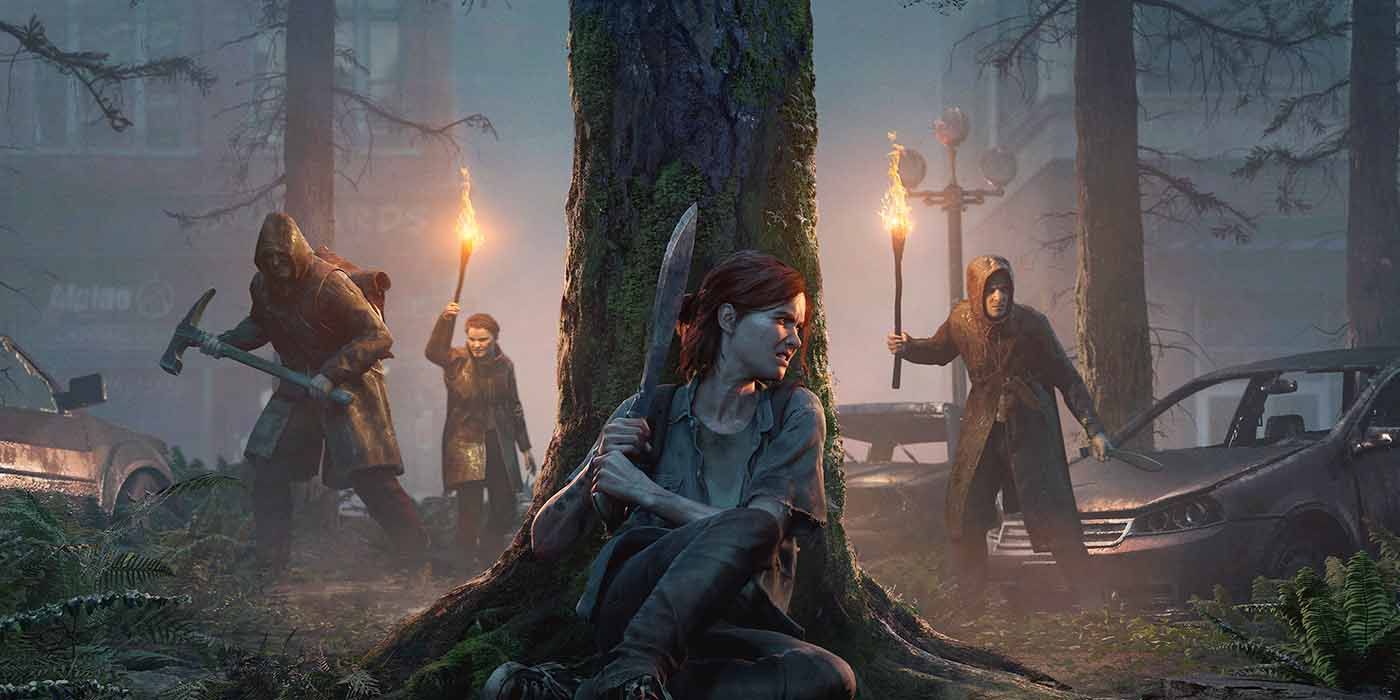
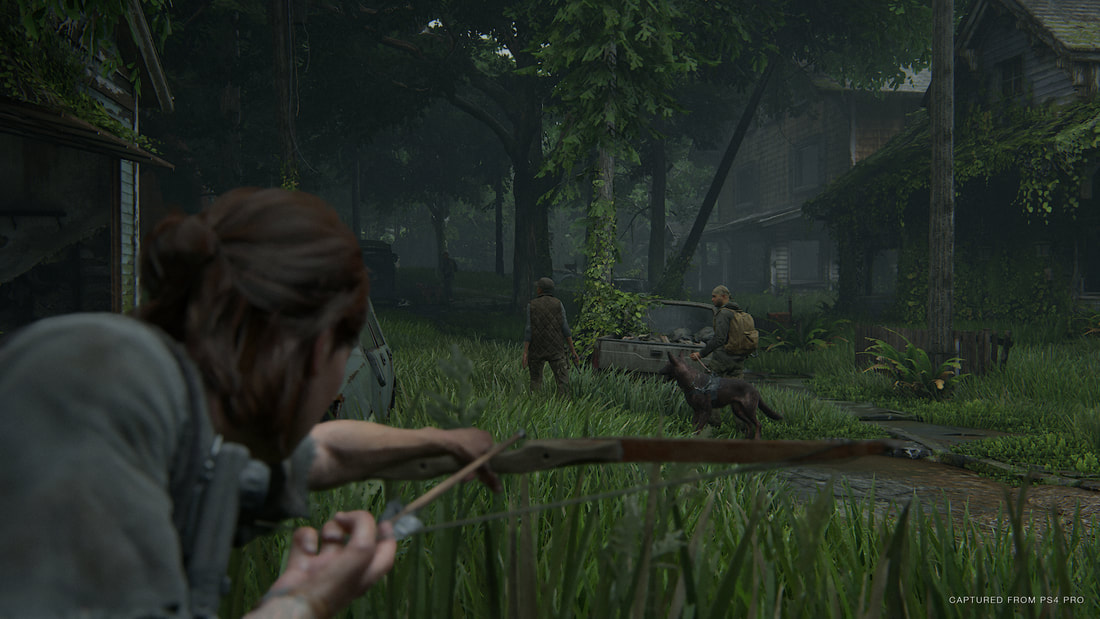


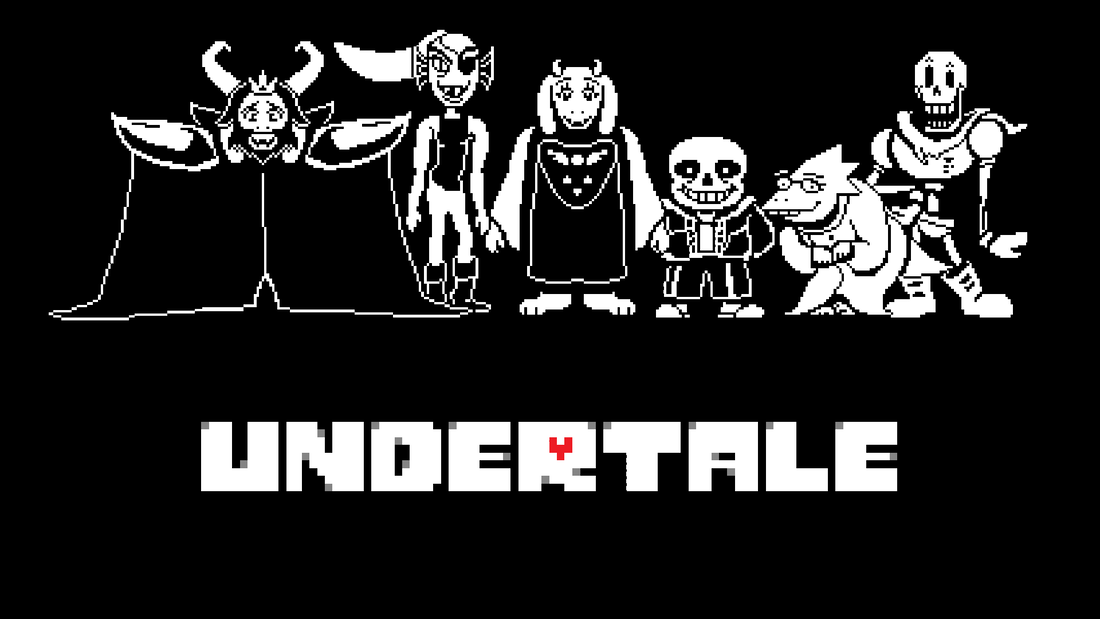
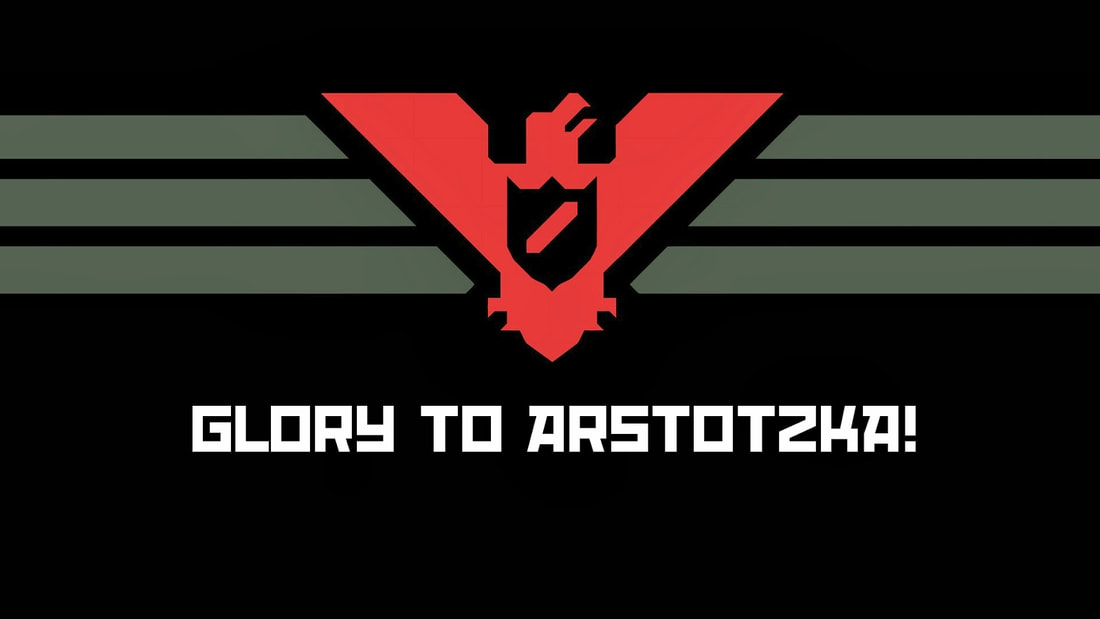



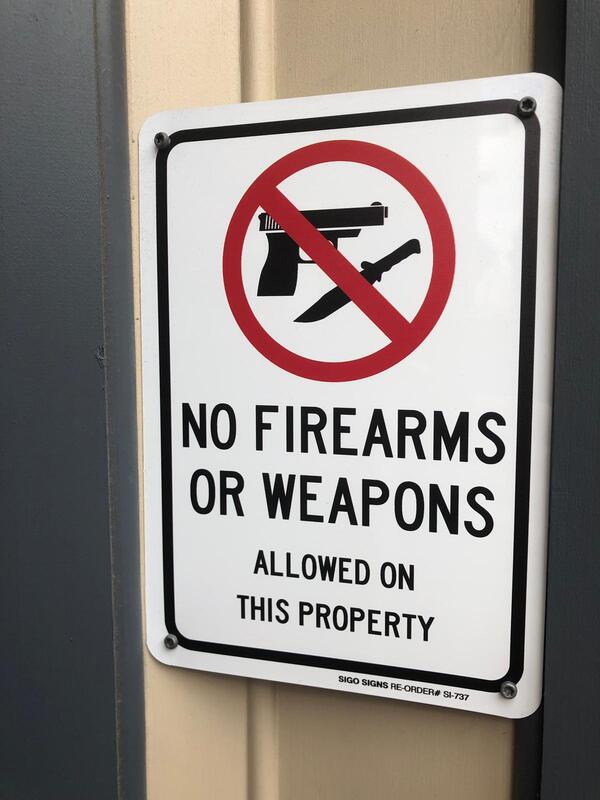

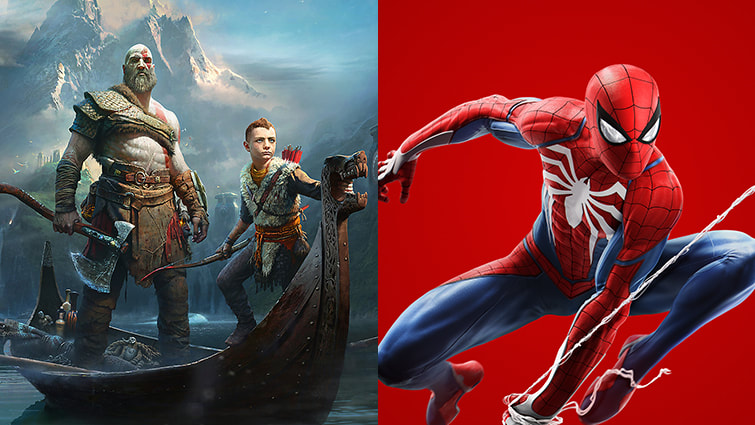
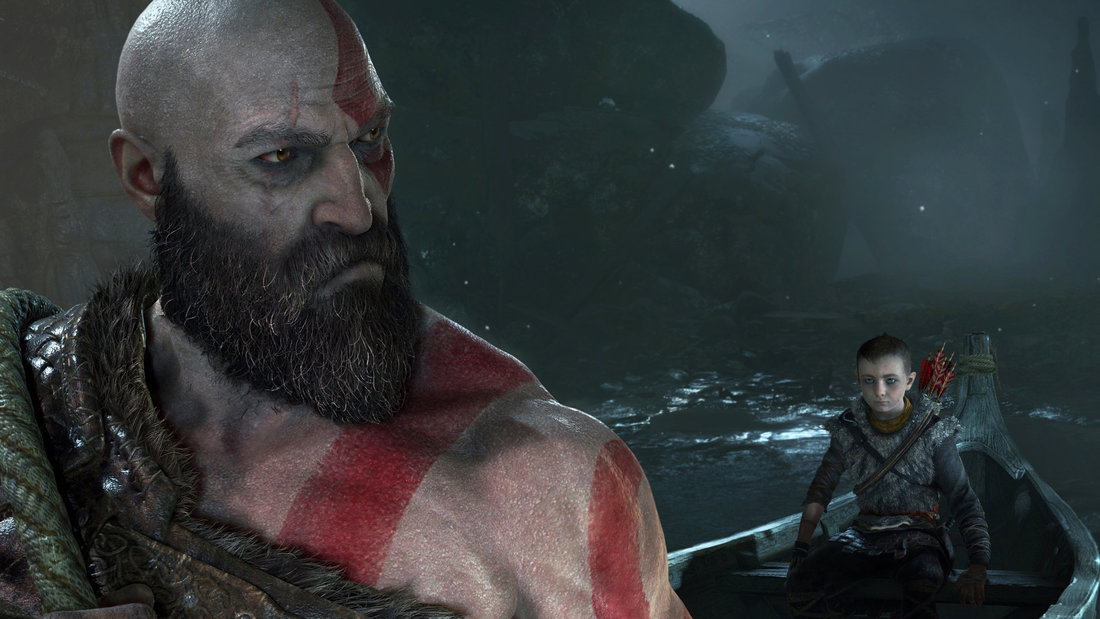
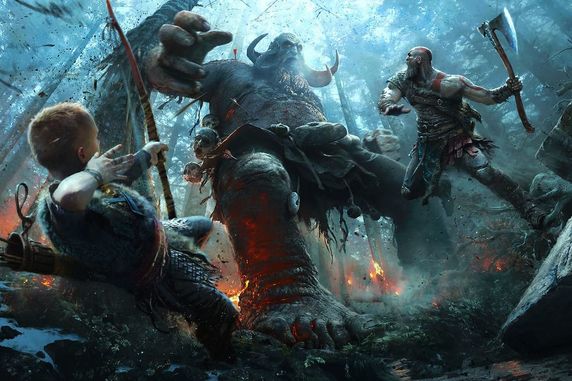
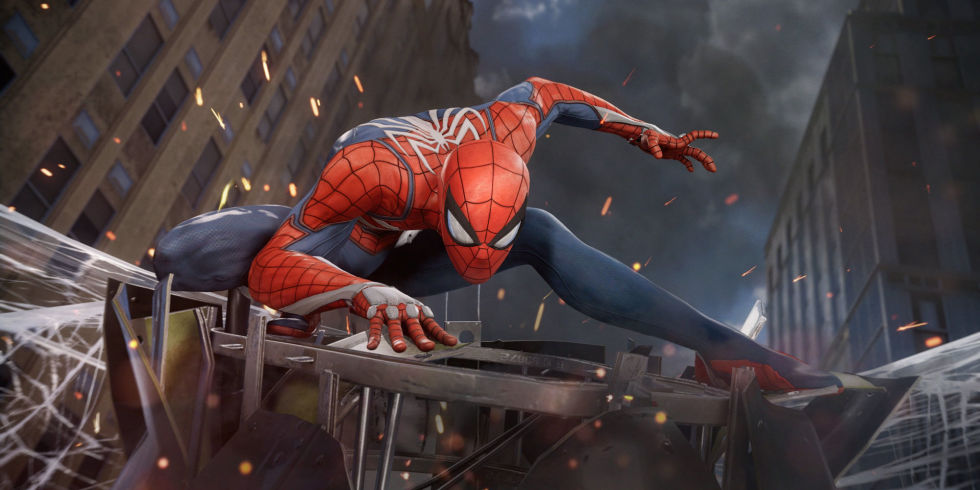
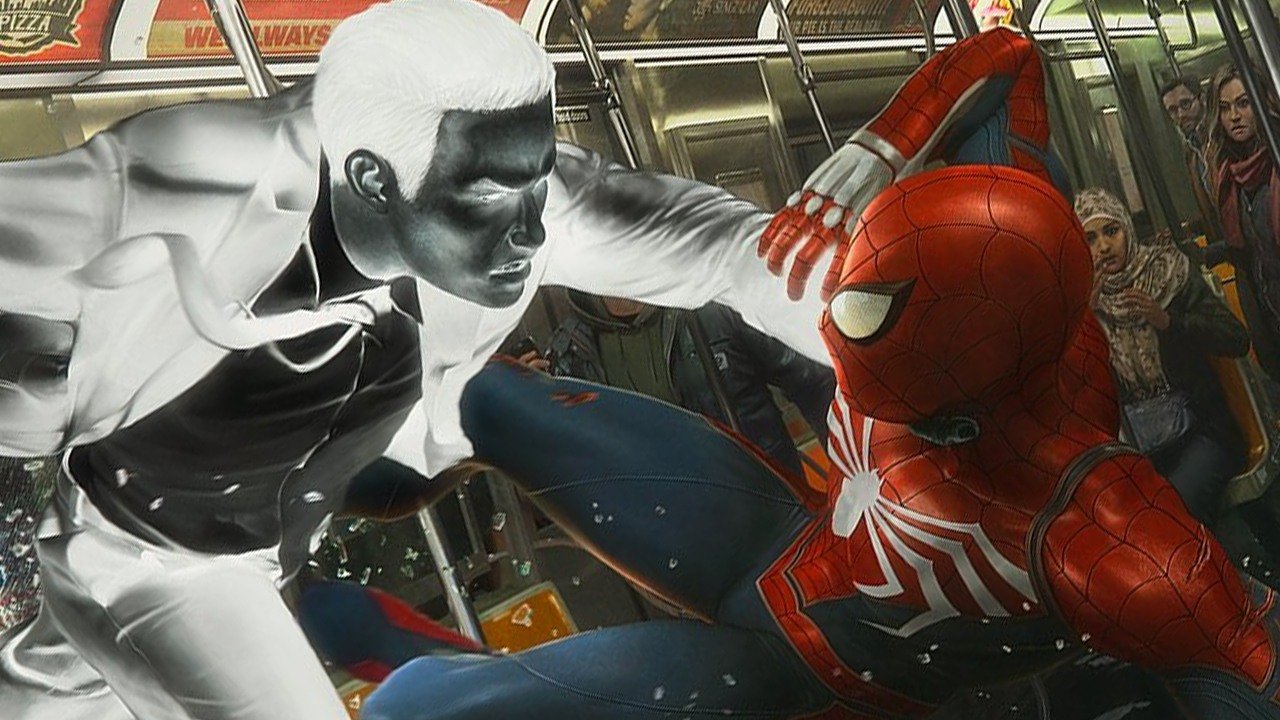
 RSS Feed
RSS Feed
